… from the Wychwoods Albums Archive
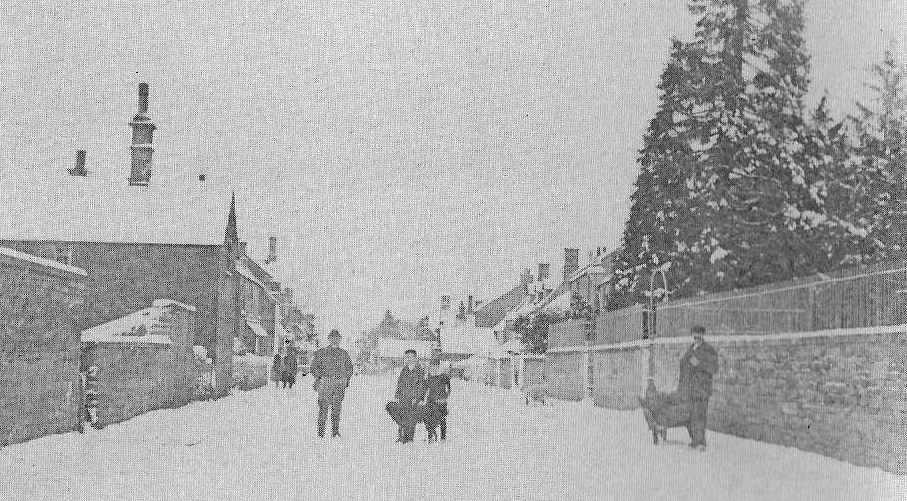
This view down the High Street is thought to have been taken on Boxing Day. The Baptist Chapel, behind the railings on the right, was built in 1839. It was considered that the large tree spoilt the look of the Chapel so it was cut down and part of it was made into a hymn board.
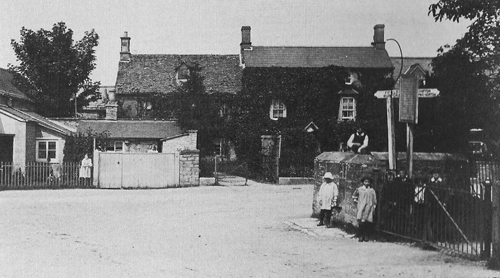
The corner of the Lyneham Road and Shipton Road had always been the place for the men of Milton to gather, the older men waiting for the Quart Pot to open and the younger ones for something to happen. The tap was one of the village water supplies and was eventually demolished to improve the junction and for the installation of the coronation gates.
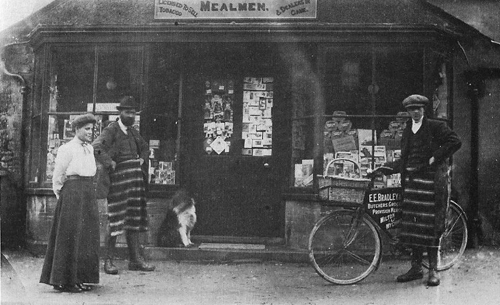
In Kelly’s Directory in the early 1900s, E.E. Bradley is listed as a butcher and farmer in Shipton, but by 1920 his address is given as The Butcher’s Arms. His son, Cecil, from Leafield, was killed in July 1917 in the third battle of Ypres. This photograph is of Bradley’s shop, now Harmans.
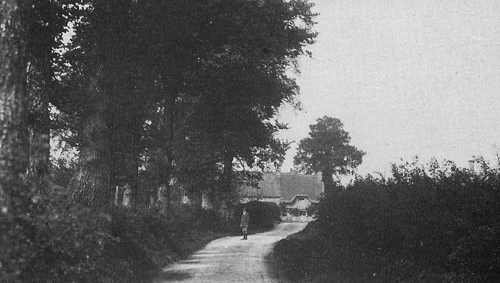
Frog Lane used to be a rural lane bordered by elm trees. At the end, on Shipton Road, are the last of the thatched cottages in Milton.
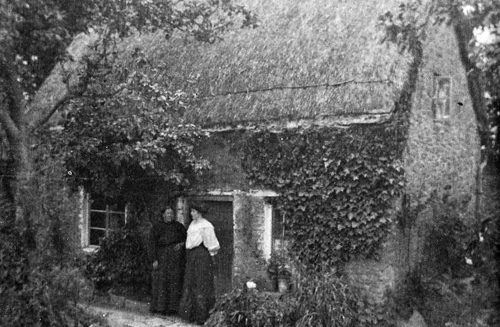
Standing in the doorway is Dinah Willis. The cottage later became a barn and has now been reconverted to a house – Barn Cottage, near Jack’s Cottage.
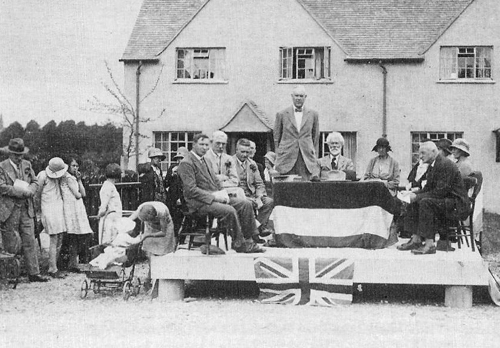
However picturesque the thatched cottage may look, rural housing left a lot to be desired. After the First World War, with the slogan ‘Homes Fit for Heroes’ , the government took the initiative for the first time in public housing, using as guidelines the garden city movement of the early 1900s.
The official opening of the fourteen ‘cottages’ was presided over by Mr J. W. Robertson Scott, Chairman of the Housing Committee of Chipping Norton R.D.C., who was one of the four speakers that day. The ‘cottages’ were built by Alfred Groves at a cost of £402 6s per house, and all had that most desirable luxury, a parlour. The Close was named after Thomas Peartree who farmed the land in the nineteenth century.
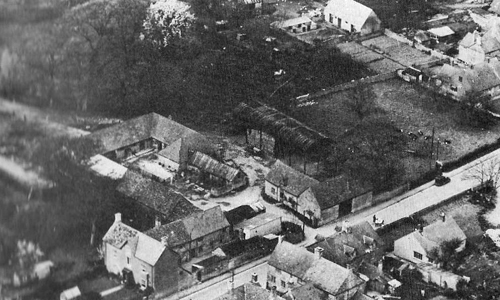
Charles Wells came to farm in Milton after serving on the First World War. After farming at Heath Farm in Green Lane, he moved in the late 1920s to Poplar Farm where he stayed until it was sold in 1964. The house and farm buildings were subsequently demolished and the houses of Poplar Farm Close built.
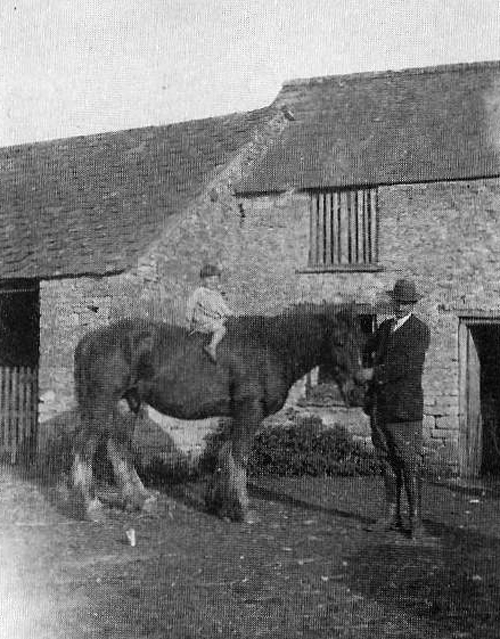
This is one of series of snapshots taken from the Society’s publications “The Wychwoods Albums”. These publications from the mid to late 1980s feature a variety of images of the Wychwoods, all of which deserve a place in our expanding online archive.
Select from:
WW1 Wychwoods Military | WW1 Wychwoods Memorabilia | Shipton WW1 Miscellany | St Michael’s Shipton Early 1900s | Early Prebendal Scenes| Shipton Court 1930s | Milton Scenes Early 1900s | Milton Social Activities | Farming Activities and People | Ascott Early 1900s | Leafield 1900s – 1930s | Fifield Residents Early 1900s | Idbury Early 1900s | Lyneham Miscellany| WW2 Evacuees | WW2 Wychwoods Home Front| WW2 Victory Celebrations|The First Wychwood Album

